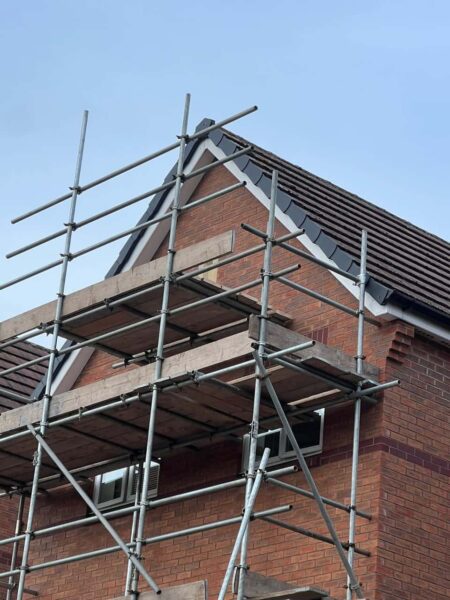How to Maintain Flat Roofs in Coastal Areas
Introduction: Maintaining a flat roof in coastal areas can be particularly challenging due to the harsh environmental conditions. Salt-laden air, strong winds, and increased humidity can all contribute to roofing materials’ accelerated wear and tear. At SAR Roofing Biggleswade, we understand the unique challenges coastal properties face and are here to provide expert advice on effectively maintaining your flat roof.
Understanding the Challenges of Coastal Conditions
Salt and Moisture
Salt from sea spray can corrode metal components and degrade roofing materials. Additionally, the constant presence of moisture can lead to the growth of mould and mildew, which can further damage the roof.
Strong Winds
Coastal areas often experience strong winds, which lift and displace roofing materials. Wind-driven rain can also penetrate any weaknesses in the roof, leading to leaks and water damage.
UV Exposure
Due to their location and the reflection of the water, flat roofs in coastal areas are often exposed to higher levels of ultraviolet (UV) radiation. Prolonged UV exposure can cause roofing materials to deteriorate faster.
Maintenance Tips for Flat Roofs in Coastal Areas
Regular Inspections
Conducting regular inspections is crucial for maintaining a flat roof in coastal areas. Inspect the roof at least twice a year and after severe weather events to identify and address any damage promptly. Look for signs of corrosion, loose or missing materials, and any water pooling areas.
Cleaning the Roof
Keeping your flat roof clean is essential to prevent the buildup of salt and debris. Regularly remove leaves, branches, and other debris that can trap moisture and cause damage. Washing the roof with fresh water can help to remove salt deposits that can accelerate corrosion.
Addressing Corrosion
Check all metal components, such as flashings, fasteners, and drains, for signs of corrosion. If you notice any rust or corrosion, address it immediately by cleaning and applying a protective coating. In some cases, it may be necessary to replace severely corroded components.
Ensuring Proper Drainage
Proper drainage is vital for preventing water damage on a flat roof. Ensure that gutters and downspouts are clear of debris and functioning correctly. Check that the roof slopes towards the drainage points to prevent water from pooling. Consider installing additional drains or scuppers if necessary.
Using Coastal-Resistant Materials
When repairing or replacing your flat roof, opt for materials designed to withstand coastal conditions. For example, corrosion-resistant metals like aluminium or stainless steel can be used for flashings and fasteners. Consider roofing membranes that are UV-resistant and have strong waterproofing properties.
Sealing and Coating
Applying a protective sealant or coating to your flat roof can help extend its lifespan. Various products are available that can provide an extra layer of protection against UV rays, salt, and moisture. As recommended by the manufacturer, reapply these coatings regularly.
Monitoring for Leaks
Coastal conditions can lead to leaks in your flat roof. Regularly inspect the interior of your property for signs of water damage, such as stains on the ceiling or walls, dampness, or mould growth. If you detect any leaks, address them immediately to prevent further damage.
Reinforcing Edges and Corners
Edges and corners of flat roofs are particularly vulnerable to wind damage. Reinforce these areas by using stronger materials and ensuring they are securely fastened. Consider installing wind deflectors or barriers to reduce the impact of strong winds.
Maintaining Roof Equipment
If you have equipment installed on your flat roof, such as HVAC units or solar panels, ensure it is properly maintained. Secure all equipment to prevent it from being dislodged by strong winds, and regularly inspect the seals around these installations for signs of wear and tear.
Professional Maintenance Services
While regular DIY maintenance is essential, having your flat roof professionally inspected and maintained can provide additional peace of mind. Professional roofers have the expertise and tools to identify and address potential issues before they become major problems. At SAR Roofing Biggleswade, we offer comprehensive maintenance services tailored to the unique needs of coastal properties.
Conclusion: Maintaining a flat roof in coastal areas requires regular inspections, cleaning, and using materials and techniques to withstand harsh conditions. By following these tips, you can help to ensure that your flat roof remains in good condition and provides lasting protection for your property.
Call us on: 01767 660 597
Click here to find out more about SAR Roofing Biggleswade
Click here to complete our contact form and see how we can help you with your roofing needs.

